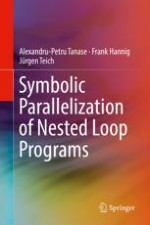2018 | OriginalPaper | Buchkapitel
5. On-Demand Fault-Tolerant Loop Processing
verfasst von : Alexandru-Petru Tanase, Frank Hannig, Jürgen Teich
Erschienen in: Symbolic Parallelization of Nested Loop Programs
Aktivieren Sie unsere intelligente Suche, um passende Fachinhalte oder Patente zu finden.
Wählen Sie Textabschnitte aus um mit Künstlicher Intelligenz passenden Patente zu finden. powered by
Markieren Sie Textabschnitte, um KI-gestützt weitere passende Inhalte zu finden. powered by
